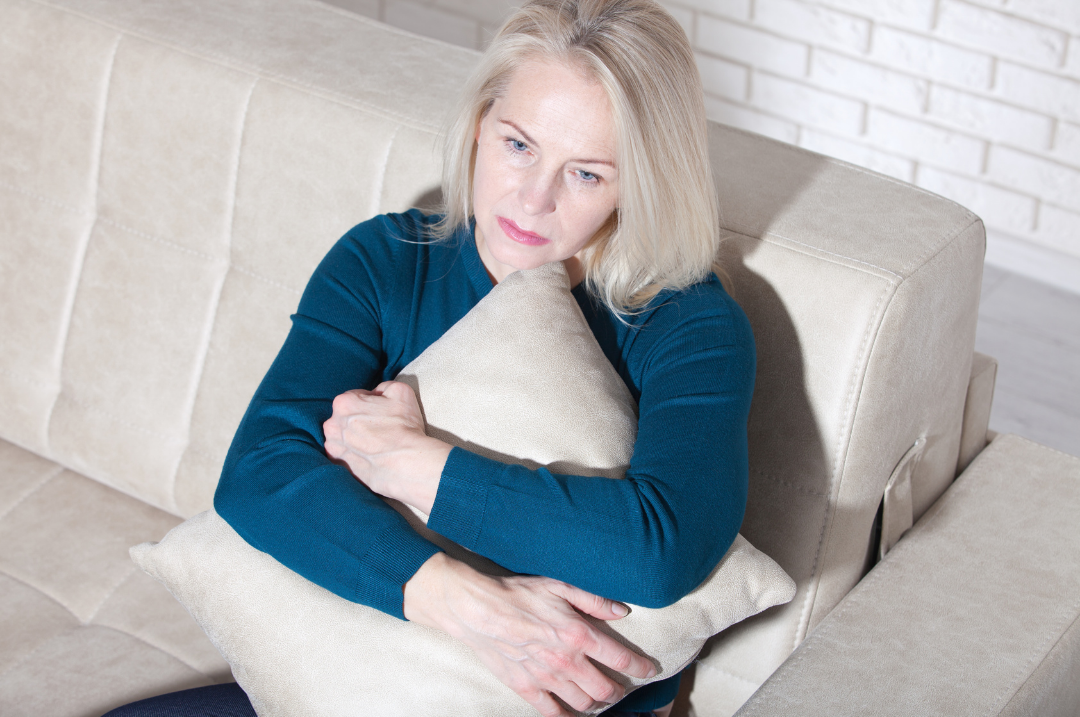More Than Midlife Blues
Between life changes in midlife, menopause, the pandemic, and the change of seasons, women can feel more than the regular mental and emotional unrest. The winter blues can start to kick in as the temperature gets lower, the days get shorter, and sunlight starts to hibernate. When this time of year starts to set in, women in some parts of the world are subject to days or even weeks of little or no sunshine and cold, frigid temperatures. Staying indoors coupled with the cold, gray days of winter can leave anyone a bit blue. But what if it’s more than that?
For some women, winter can mean developing a case of seasonal depression called seasonal affective disorder (SAD). Symptoms such as irritability, excessive sleeping, and loss of interest usually start in the fall and continue into the winter months, sapping your energy and making you feel morose.
Don’t brush off that yearly feeling as simply a case of the “midlife blues” or a seasonal funk you have to tough out on your own. Take steps to keep your mood and motivation steady throughout the year.
What Causes Seasonal Affective Disorder?
While the specific cause of seasonal affective disorder is unknown, doctors believe several factors contribute to it. The reduction in sunlight during the winter may decrease serotonin, the brain chemical that affects mood, and melatonin levels — which regulate sleep patterns — may also be disrupted.
Tips to Help Manage SAD:
- Go Outside. Even on cold and overcast days, outside light can help. So bundle up, grab some hot cocoa, and go for a long walk or eat lunch outside.
- Make Your Environment Sunnier and Brighter. Open the blinds, sit near windows, and give your body as much access to natural light as possible. Often during the winter inversion season, heading to the mountains above the inversion line will expose blue skies and sun!
- Exercise. Consistent physical activity helps reduce stress and anxiety. Moving your body regularly will help lift your mood and keep symptoms of SAD at bay.
- Take Supplements. I found out in my 40’s that I was Vitamin D deficient, and adding Vitamin D and other needed supplements made a huge difference for me. Check with your doctor and do research to determine which supplements can help you.
- Hormone Replacement. Sometimes hormone imbalance plays a part in SAD. There are so many options for hormone replacement. You can request lab tests and other assessements from your doctor to help determine what you need.
- Essential Oils. The aromatic compounds of essential oils can create an immediate response in the limbic system of the brain to promote feelings of optimism and elevate your mood. Essential oils can be diffused or applied to your skin. I recommend you contact an essential oil wellness advocate or do research to choose oils that will help you.
Here’s a great article with additional information and suggestions: https://my.clevelandclinic.org/health/diseases/9293-seasonal-depression
When to See a Doctor
It’s normal to have some days when you feel down. And I shared ways to manage seasonal blues both on your own and with a doctor’s guidance. But if you feel down for days at a time and you can’t get motivated to do activities you normally enjoy, see your doctor. That’s especially important if your sleep patterns and appetite have changed or if you feel hopeless, think about suicide, or turn to alcohol for comfort or relaxation.
If you have any suicidal thoughts or intentions, get help immediately. National Suicide Prevention Hotline: 800-273-8255
Until next time!
Deborah
To learn more, I invite you to follow me on my Facebook Page, where I share inspiration, tips, and teachings to create more confidence and empowerment.

Interested in coaching
and working with me?
Schedule your FREE Discovery Session
with me to get your journey started.

